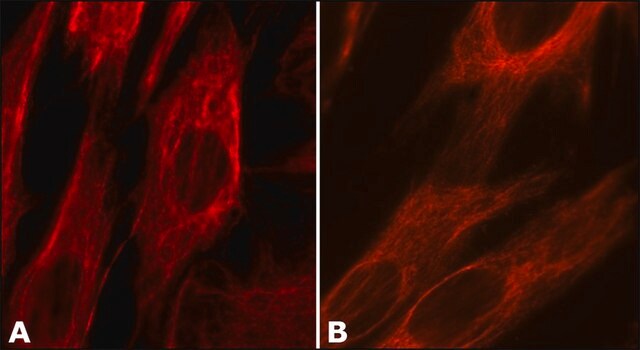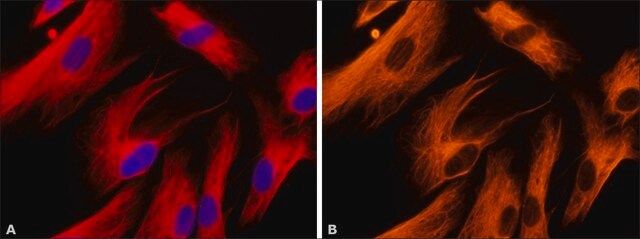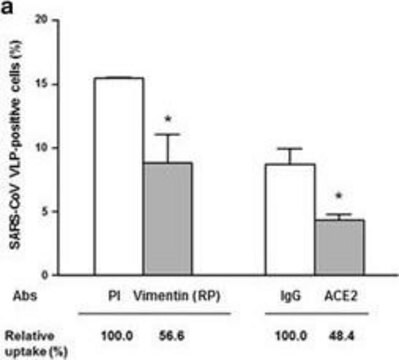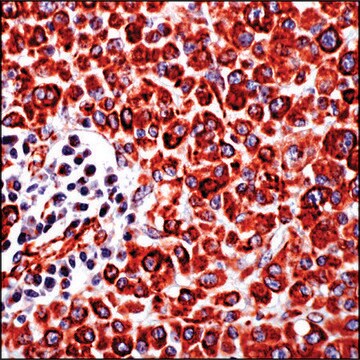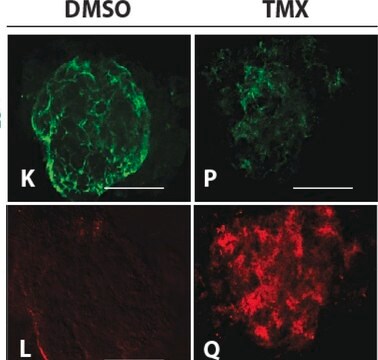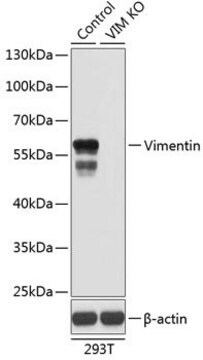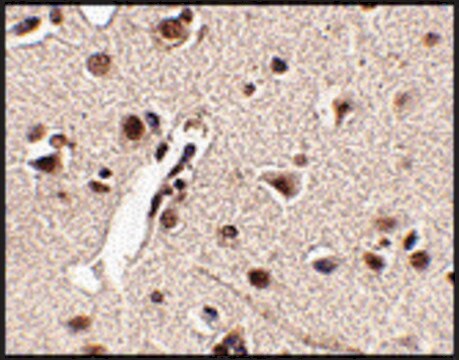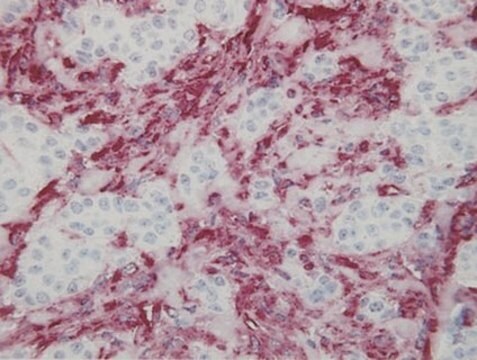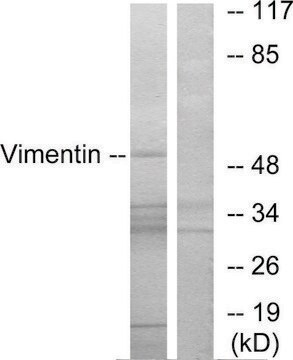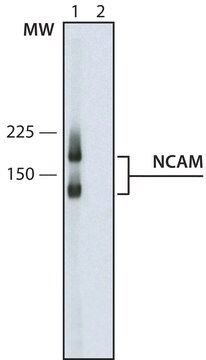V2258
Anti-Vimentin Antibody
mouse monoclonal, LN-6
Sinônimo(s):
Anti-F5H288
About This Item
Produtos recomendados
Nome do produto
Monoclonal Anti-Vimentin antibody produced in mouse, clone LN-6, ascites fluid
fonte biológica
mouse
conjugado
unconjugated
forma do anticorpo
ascites fluid
tipo de produto de anticorpo
primary antibodies
clone
LN-6, monoclonal
contém
15 mM sodium azide
reatividade de espécies
pig, mouse, sheep, human, bovine, rabbit, feline, rat
técnica(s)
immunohistochemistry (formalin-fixed, paraffin-embedded sections): 1:200 using human tissue sections
immunoprecipitation (IP): suitable
indirect immunofluorescence: suitable using cultured cells
western blot: suitable
Isotipo
IgM
nº de adesão UniProt
Condições de expedição
dry ice
temperatura de armazenamento
−20°C
modificação pós-traducional do alvo
unmodified
Informações sobre genes
human ... VIM(7431)
mouse ... Vim(22352)
rat ... Vim(81818)
Descrição geral
Especificidade
Imunogênio
Aplicação
Ações bioquímicas/fisiológicas
Exoneração de responsabilidade
Não está encontrando o produto certo?
Experimente o nosso Ferramenta de seleção de produtos.
recomendado
Código de classe de armazenamento
12 - Non Combustible Liquids
Classe de risco de água (WGK)
nwg
Ponto de fulgor (°F)
Not applicable
Ponto de fulgor (°C)
Not applicable
Escolha uma das versões mais recentes:
Já possui este produto?
Encontre a documentação dos produtos que você adquiriu recentemente na biblioteca de documentos.
Os clientes também visualizaram
Artigos
In the midst of beeping lab timers, presentations and grant deadlines, it is easy to take for granted the quality of lab reagents.
Alzheimer's disease (AD) is the most common cause of dementia in the elderly and is characterized by gradual loss of cognitive functions.
Nossa equipe de cientistas tem experiência em todas as áreas de pesquisa, incluindo Life Sciences, ciência de materiais, síntese química, cromatografia, química analítica e muitas outras.
Entre em contato com a assistência técnica

